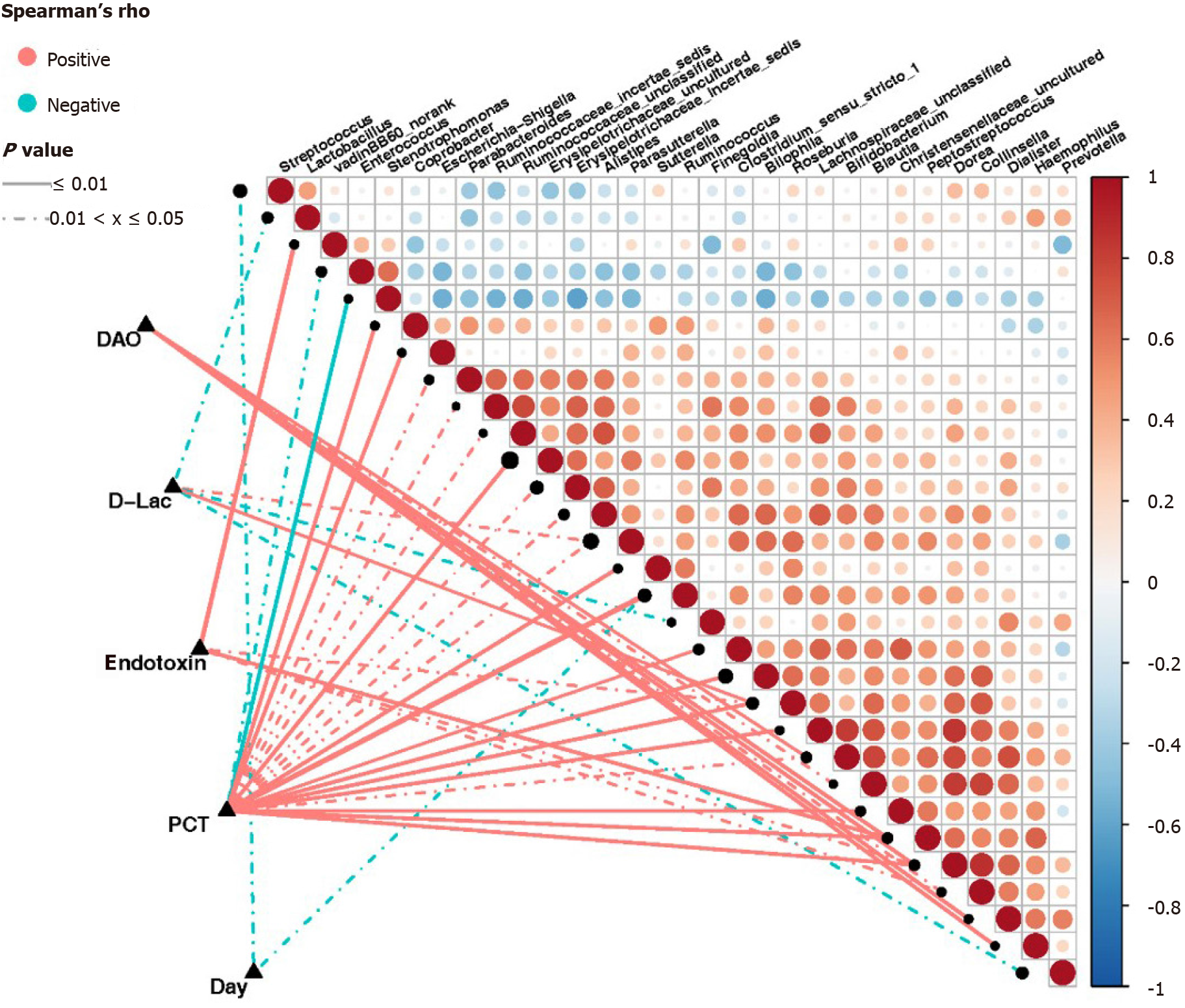Copyright
©The Author(s) 2021.
World J Gastroenterol. May 21, 2021; 27(19): 2376-2393
Published online May 21, 2021. doi: 10.3748/wjg.v27.i19.2376
Published online May 21, 2021. doi: 10.3748/wjg.v27.i19.2376
Figure 8 Correlation between clinical indicators and abundance of fecal microbiota in sepsis patients.
Heatmap showing partial Spearman’s correlation coefficients among 30 genera and clinical indexes. Connecting lines represent the correlation coefficient values above 0.4 (red, positive correlation) or below -0.4 (blue, negative correlation). Solid lines represent P ≤ 0.01. Dotted lines represent 0.01 < P ≤ 0.05. The intensity of shading in the circles is proportional to the magnitude of the association. In the figure, “day” indicates the collection time of stool samples from sepsis patients after admission to the intensive care unit (ICU) (days 1, 3, and 7 after admission to the ICU). D-Lac: d-lactic acid; PCT: Procalcitonin; DAO: Diamine oxidase.
- Citation: Yang XJ, Liu D, Ren HY, Zhang XY, Zhang J, Yang XJ. Effects of sepsis and its treatment measures on intestinal flora structure in critical care patients. World J Gastroenterol 2021; 27(19): 2376-2393
- URL: https://www.wjgnet.com/1007-9327/full/v27/i19/2376.htm
- DOI: https://dx.doi.org/10.3748/wjg.v27.i19.2376









